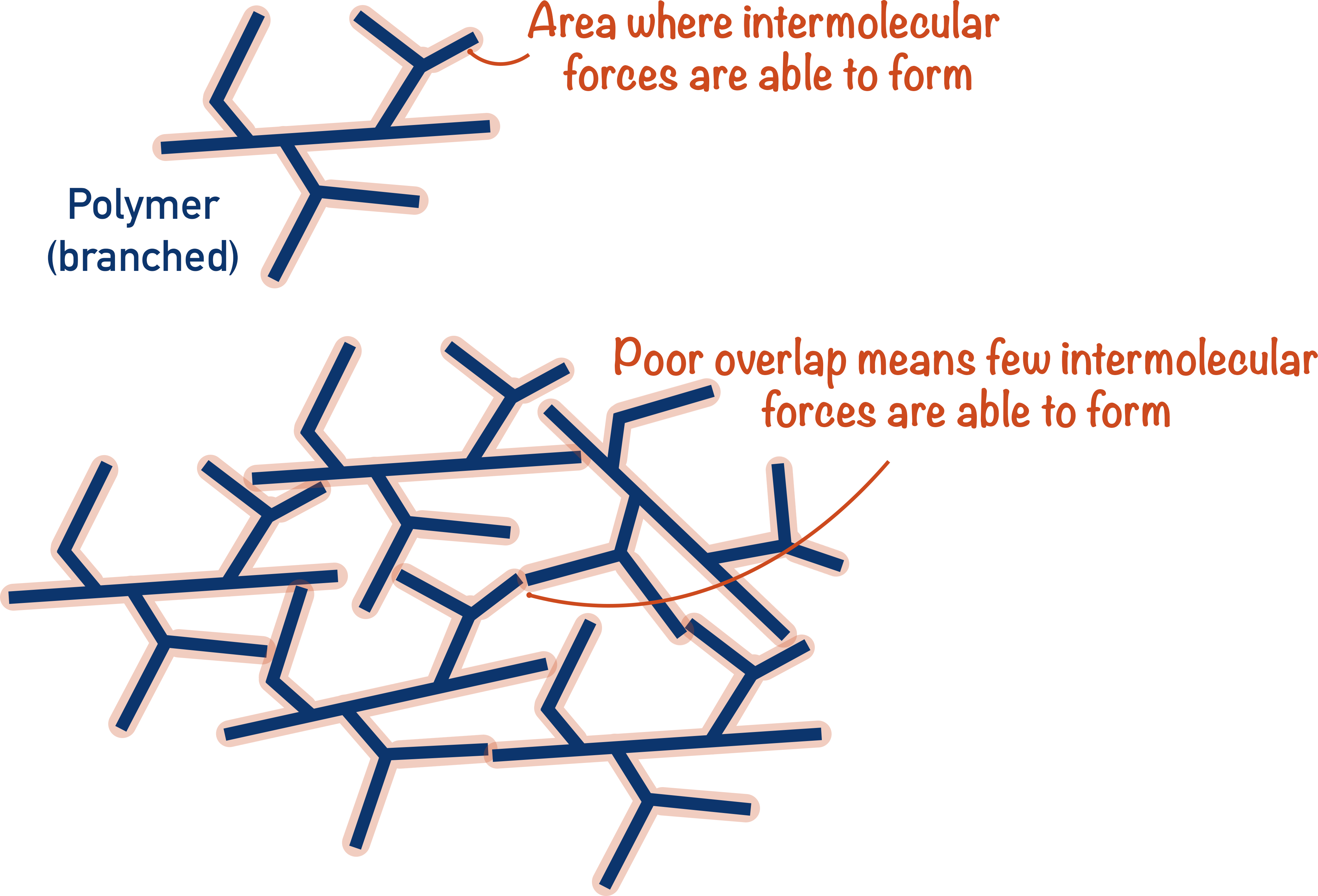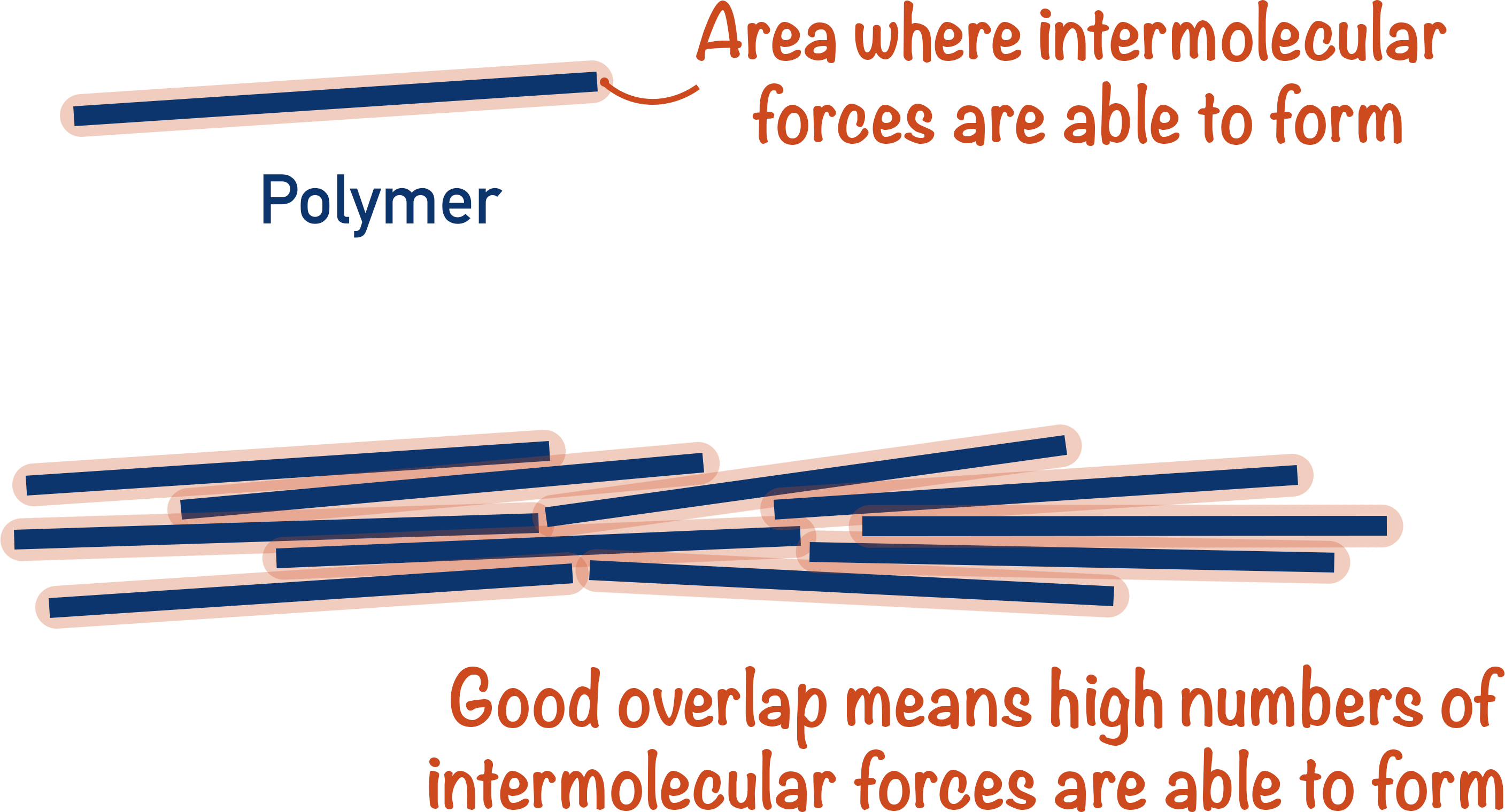Quick Notes Properties of Polymers
- Longer chain polymers have higher melting points than shorter chain polymers.
- The larger the contact surface between polymers, the greater the number of intermolecular forces that can form between them, resulting in a higher melting point.
- Branched chain polymers have lower melting points than straight chained polymers as there is less contact surface between them, resulting in fewer intermolecular forces.
- Addition polymers are not biodegradable.
- Condensation polymers are biodegradable and are broken down in hydrolysis reactions.
Full Notes Properties of Polymers
Polymers are large molecules that are made up of repeating units. In a polymer, repeating units are joined together many times to produce long chains. The repeating units themselves are made from simple molecules called monomers.
Melting Points
Polymer molecules form intermolecular forces between themselves. The larger the polymers, the greater the number of intermolecular forces that can be formed between the molecules of the polymer, so the higher the melting point. The smaller the polymers, the smaller the number of intermolecular forces that can be formed, so the lower the melting point.

Branched chain polymers have lower melting points than straight chain polymers. With a branched chain polymer, the polymers are unable to ‘stack’ or get close enough together to form many intermolecular forces. Fewer intermolecular forces means less energy is needed to break apart the polymers, therefore a lower melting point.

Straight chain polymers can stack together easily and large contact surfaces arise between the polymers, enabling large numbers of intermolecular forces to form. More intermolecular forces require more energy to break apart the polymers, therefore a higher melting point.
Biodegradability
Addition polymers are not bio-degradable. This means they are not easily broken down in nature back into monomers.
Condensation polymers are (often) bio-degradable. This is because the repeating units that make up the polymer are held together by bonds made during condensation reactions. The opposite of a condensation reaction is a hydrolysis reaction. Condensation reactions form bonds (by, usually, releasing water) between molecules; hydrolysis reactions break bonds (by, usually, using water) between molecules. Acidic or alkaline conditions enable acid or alkaline hydrolysis reactions to occur, breaking the polymer into core monomers.
